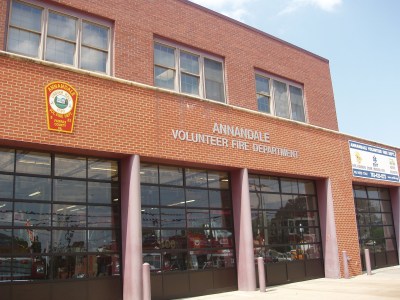National Burn Awareness Week:
Initial First Aid Treatment for Minor Burns
Fairfax County Fire Department
 National Burn Awareness Week is a good opportunity to provide information on the varying degrees of burns and how to treat/handle each. Many people will apply ice to a burn which is incorrect and can cause further damage.
National Burn Awareness Week is a good opportunity to provide information on the varying degrees of burns and how to treat/handle each. Many people will apply ice to a burn which is incorrect and can cause further damage.
Please take a moment to review the below information from our friends at the American Burn Association.
Burns are primarily divided into three categories: first-degree or superficial burns, second-degree, or partial thickness burns and third-degree or full thickness burns. How these types of burns are treated initially will determine whether there is a successful outcome.
First-Degree Burn – are burns which involve the outer most layer of skin and are usually associated with a sun burn. Such an injury may occur from too much exposure to the sun (gardening, sunbathing, etc.). The skin is usually still intact, but may appear to be red, very warm or hot to touch and painful. There may also be small blisters and swelling in and around the area of injury. Initial first-aid treatment for a first-degree burn include the following:
DO’s
- Stop the burning process: cool the burn with running cool (not cold) water for at least 5 minutes. But do not use ice, as this may cause further skin damage. Do not over cool! If the victim starts to shiver, stop the cooling process.
- Remove all jewelry, watches, rings and clothing around the burned area as soon as possible.
- Administer an over-the-counter pain reliever such as ibuprofen or acetaminophen for pain control. Follow the directions on the label. Consult a physician or health care provider if pain is not relieved.
- Cover the burn with a sterile gauge bandage or clean cloth. Wrap the burned area loosely to avoid putting too much pressure on the burn tissue.
- Minor burns will usually heal without further treatment.
- For small area burns, apply soothing lotions that contains aloe vera to the burned area to help relieve the pain and discomfort.
- Seek medical attention if there is a persistent fever not relieved by medication or redness that may extend beyond the border of the burn or pain is not controlled by ibuprofen or acetaminophen.
- Drink plenty of fluids (electrolyte containing solutions such as gator aid) if the person appears to be dehydrated.
DON’TS
- Do not apply ice – this may cause further damage to the skin.
- Do not use any butter, ointments or other home remedies on the burn. Such substances may trap the heat in the tissue and makes the burn worse.
- Do not break any blisters…leave intact.
- Do not delay seeing medical attention if the burn is larger than the size of the victim’s palm.
Second-Degree Burn – occurs when the second layer of skin (dermis) is burned. This burn usually has the following characteristics: very red, blister formation, extremely painful and a fair amount of swelling. In general, if a second-degree burn is smaller than 2-3 inches (7 centimeters) it may be treated as a minor burn. If the area burned is larger than this, or involves functional parts of the body such as feet, face, eye, ears, groin or located over major joints, more in-depth medical attention is needed. Call 9-1-1 or take the person to the nearest emergency room, family doctor or minor emergency clinic to have the burn evaluated. Failure to do so may result in permanent disfigurement or loss of function.
Third-Degree Burn – are NOT minor burns and should be evaluated and treated by a healthcare provider immediately. Call 9-1-1! A third-degree burn is a very serious burn, no matter what the size or area of the body that may be involved. A third-degree burn involves all layers of the skin and can cause permanent tissue damage. The skin may appear to be charred, blackened, or white. The skin texture may be very dry or leathery.
Remember, for any type of burn injury, when in doubt or if you think the individual’s life is in danger, call 9-1-1 so your Fairfax County Fire and Rescue Department can respond to help.
Annandale Volunteer Fire Dept.
7128 Columbia Pike
Annandale, VA 22003
703-256-2552 . www.avfd.org

